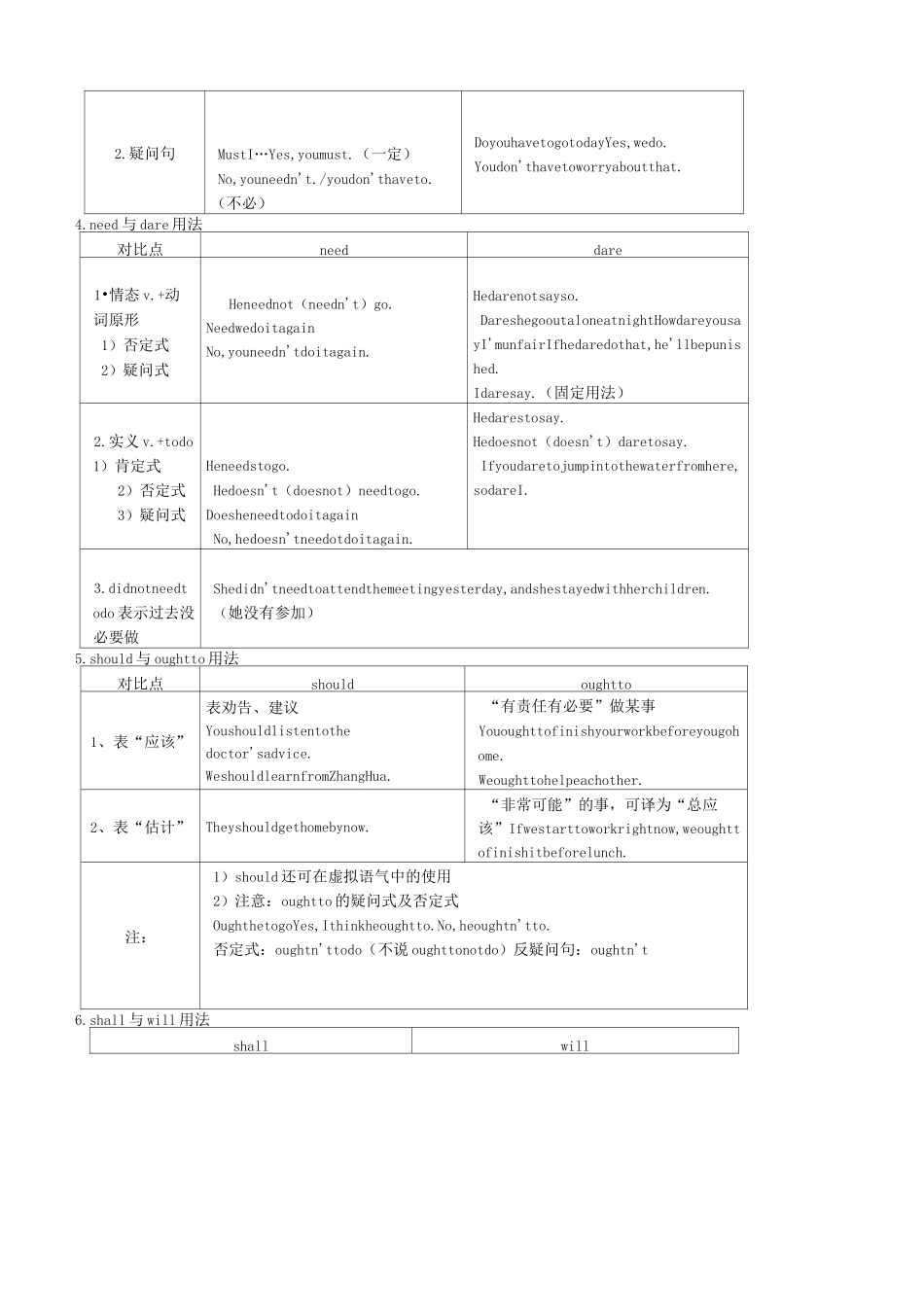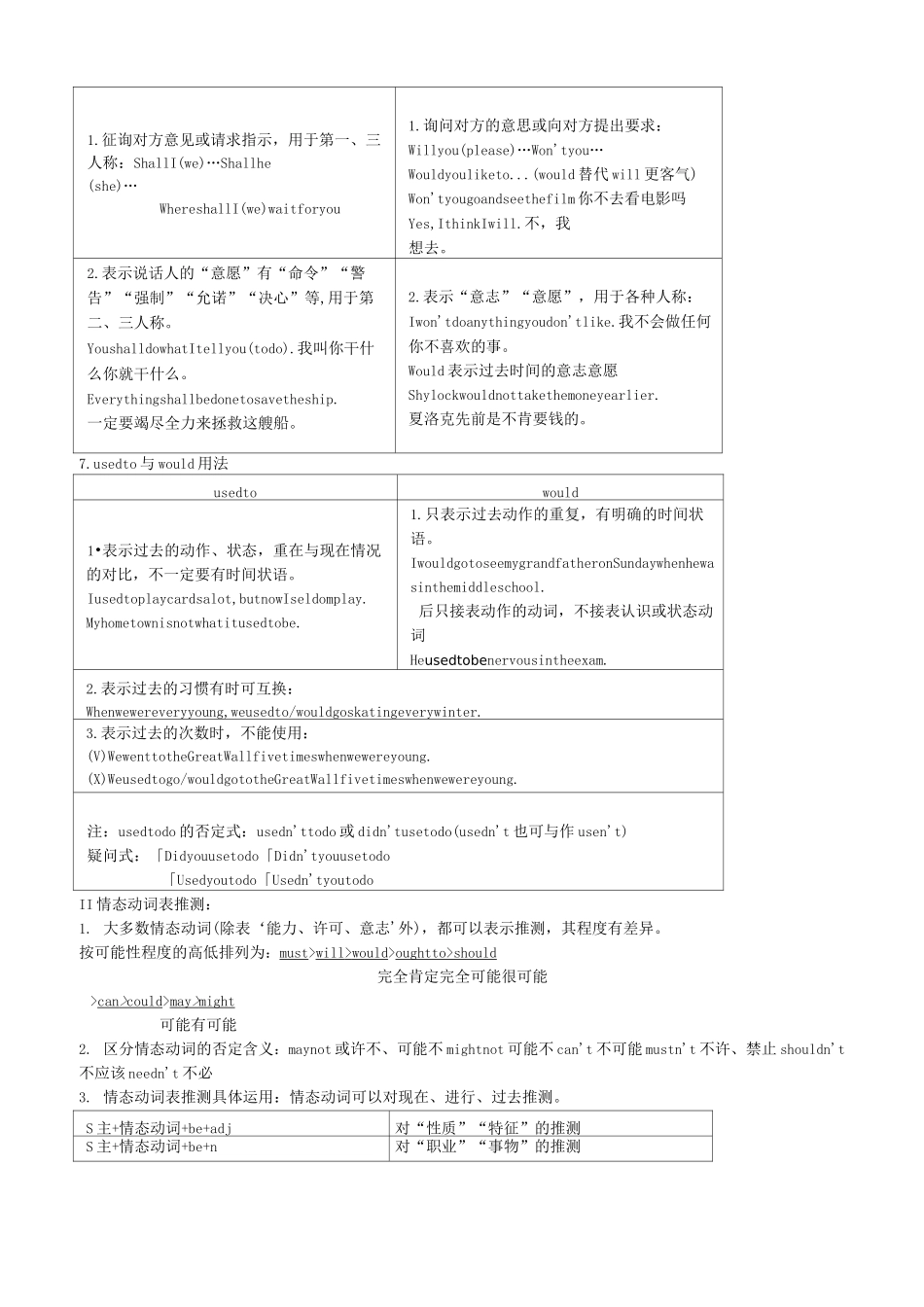情态动词总结I 情态动词的特征:1. 本身有词义。2. 不能独立作谓语。2. 后接动词原形一起构成谓语。3. 不随人称和数的变化。II 情态动词各自的基本意义及用法1. can 与 could 用法对比点cancould1、表“能力”CanyouliftthisheavyboxIcouldn'tunderstandwhathesaidatall.2、表“许可”Youcanuseadifferentmaterialinstead.HesaidIcouldborrowhisbike.3、“怀疑”No,no,itcan'tbetrue.WhatonearthcanthismeanWethoughtthestorycouldnotbetrue.Howcouldyoubesocareless4、can 与beableto 区别1.could 代替 can,表示语气更为婉转。Eg.CouldIuseyourbikeYes,Ican2. can(能够)-beableto(仅表能力时),但 beableto 表示一番努力后,才能做得到,且有更多的时态。与 might 用法对比点maymight1.表“询问”MayI…(二 CanI…)MightI…(二 CouldI…)(但比用 may 更客气)2•表“允许”Youmaytaketheboythere.Hetoldmehemightcome.(might 与 told 相呼应)3.表“可能”“或许”Shemaynorlikethisplace.I'mafraidhemightnotlikethisplay.注:1. MayI…的答语。2. may 可表示期望或祝愿Mayyousucceed!3.may(might)用于目的状语从句。肯定:Yes,youmay.否定:No,youmustn't 不行(语气强硬)No,youmaynot 或 No,you'dbetternot.Theemperorgavethemsomegoldinorderthattheymightbegintheirworkatonce.3.must 与 haveto 用法对比点musthaveto1.表“必须”(主观看法)必须;没有过去式,可用于间接引语中。HetoldmeImustdoaccordingtowhathesaid.(客观需要)不得不,有多种时态。It'srainingheavily,wecan'tgonow.2.疑问句MustI…Yes,youmust.(一定)No,youneedn't./youdon'thaveto.(不必)DoyouhavetogotodayYes,wedo.Youdon'thavetoworryaboutthat.4.need 与 dare 用法对比点needdare1•情态 v.+动词原形1)否定式2)疑问式Heneednot(needn't)go.NeedwedoitagainNo,youneedn'tdoitagain.Hedarenotsayso.DareshegooutaloneatnightHowdareyousayI'munfairIfhedaredothat,he'llbepunished.Idaresay.(固定用法)2.实义 v.+todo1)肯定式2)否定式3)疑问式Heneedstogo.Hedoesn't(doesnot)needtogo.DoesheneedtodoitagainNo,hedoesn'tneedotdoitagain.Hedarestosay.Hedoesnot(doesn't)daretosay.Ifyoudaretojumpintothewaterfromhere,sodareI.3.didnotneedtodo 表示过去没必要做Shedidn'tneedtoatten...


